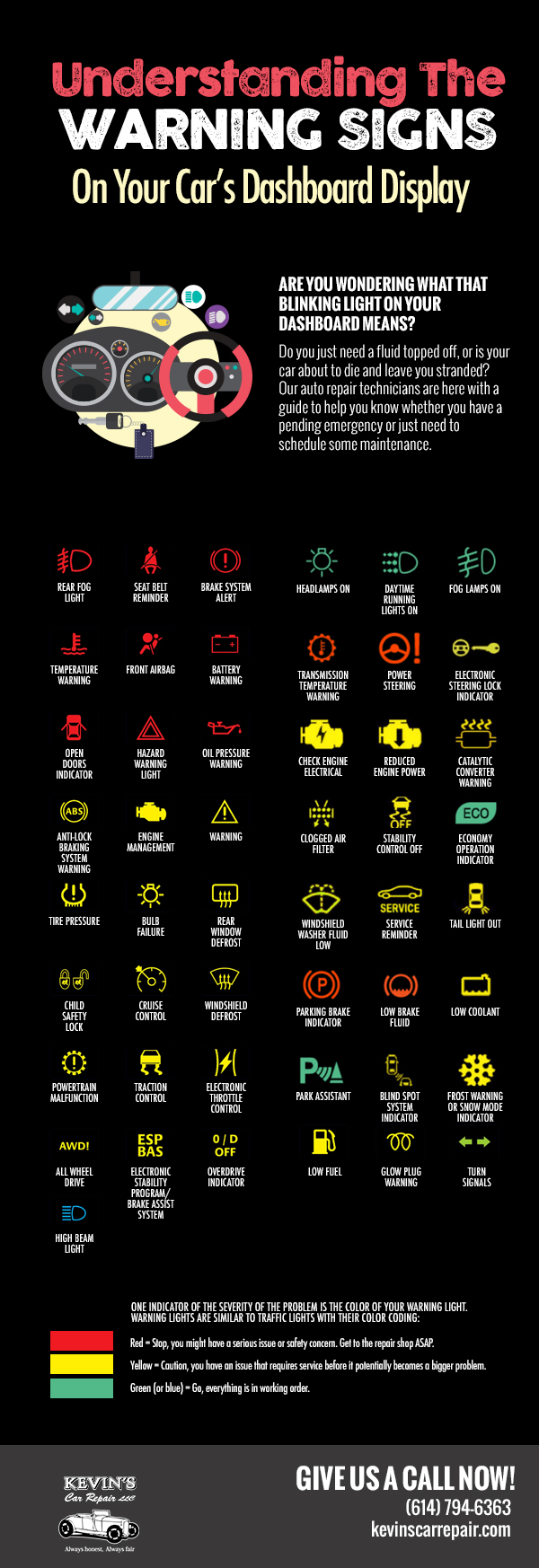Interpreting Your Auto'S Alert Lights: Their True Implications
Interpreting Your Auto'S Alert Lights: Their True Implications
Blog Article
click this link now Composed By-Higgins Kejser
When you're behind the wheel, those beautiful warning lights on your dashboard can be a little bit bewildering. Do you know what they're trying to tell you about your vehicle's health? Understanding the relevance of these lights is essential for your security and the long life of your vehicle. So, the following time one of those lights pops up, would not you wish to understand its message precisely and take the necessary actions to address it?
Common Warning Lighting and Interpretations
Determine typical caution lights in your car and understand their significances to make certain secure driving.
The most typical warning lights consist of the check engine light, which signals issues with the engine or discharges system. If this light comes on, it's critical to have your automobile checked immediately.
The oil pressure cautioning light shows low oil pressure, calling for prompt attention to prevent engine damages.
A flashing battery light might suggest a damaged charging system, potentially leaving you stranded otherwise dealt with.
The tire pressure monitoring system (TPMS) light notifies you to reduced tire stress, influencing automobile stability and fuel performance. Disregarding this can lead to unsafe driving conditions.
The abdominal muscle light shows a trouble with the anti-lock braking system, compromising your ability to quit promptly in emergencies.
Finally, the coolant temperature cautioning light warns of engine overheating, which can lead to serious damages otherwise solved promptly.
Recognizing these usual warning lights will certainly help you resolve concerns promptly and preserve safe driving problems.
Significance of Prompt Attention
Recognizing the typical caution lights in your cars and truck is only the first step; the relevance of promptly resolving these cautions can't be emphasized sufficient to guarantee your safety and security on the road.
When a warning light illuminates on your dashboard, it's your car's way of communicating a prospective issue that requires focus. Overlooking these cautions can result in more extreme issues later on, jeopardizing your safety and security and potentially costing you extra in repairs.
Motivate focus to advising lights can protect against failures and crashes. For instance, a blinking check engine light can show a misfire that, if left unattended, could trigger damage to the catalytic converter. Addressing car window tinting auckland price can conserve you from an expensive repair service.
Similarly, a brake system cautioning light may signal low brake liquid or worn brake pads, critical parts for your safety when driving.
Do It Yourself Troubleshooting Tips
If you see a caution light on your control panel, there are a couple of DIY repairing suggestions you can attempt prior to seeking professional help.
The very first step is to consult your auto's handbook to recognize what the particular caution light shows. In some cases the problem can be as straightforward as a loosened gas cap causing the check engine light. Tightening up the gas cap may solve the problem.
Another common problem is a reduced battery, which can trigger different alerting lights. Checking the battery links for corrosion and guaranteeing they're safe and secure might deal with the trouble.
If a warning light continues, you can attempt resetting it by separating the cars and truck's battery for a couple of mins and after that reconnecting it. Additionally, examining your car's fluid levels, such as oil, coolant, and brake liquid, can help repair advising lights related to these systems.
Final thought
In conclusion, comprehending your cars and truck's warning lights is crucial for keeping your vehicle running smoothly and securely. By immediately attending to these signals and knowing what they indicate, you can prevent expensive repair services and possible break downs.
Bear in mind to consult your automobile's guidebook for particular details on each alerting light and take action as necessary to make certain a hassle-free driving experience.
Remain notified, stay safe when driving!
